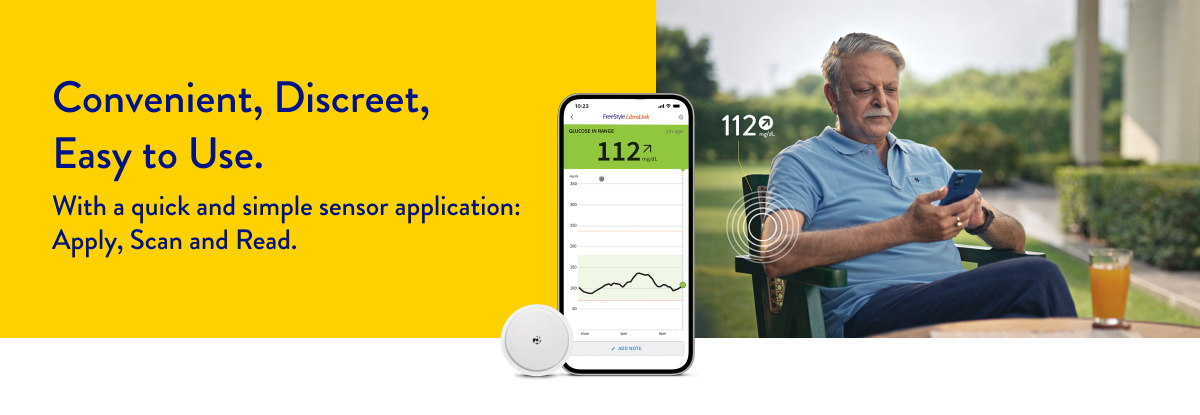
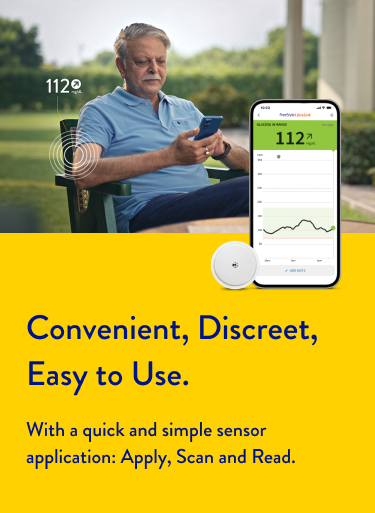
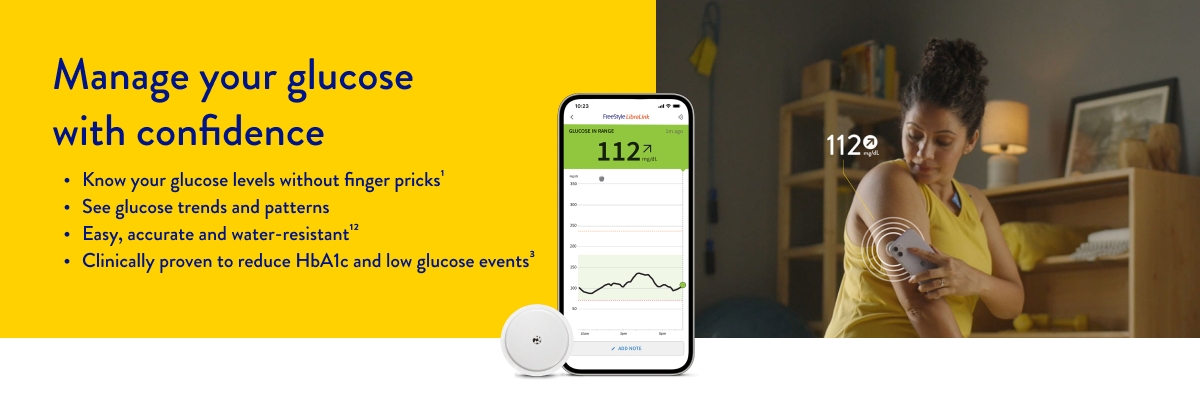
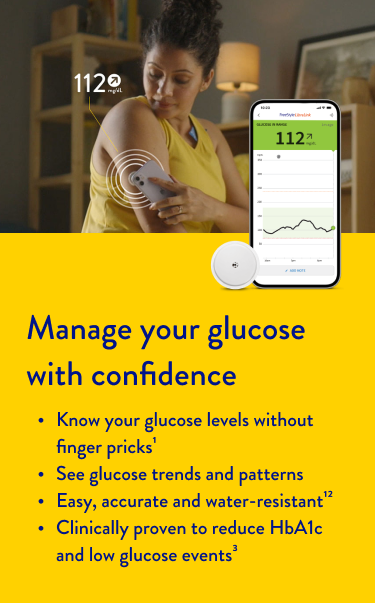

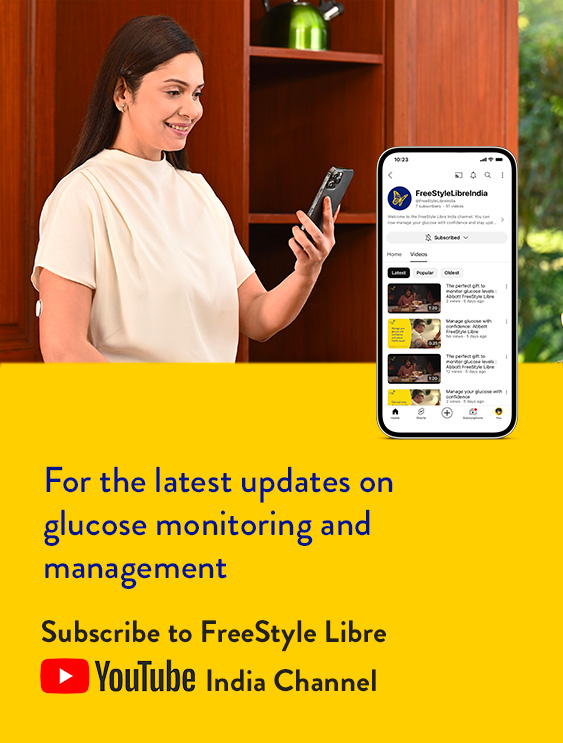
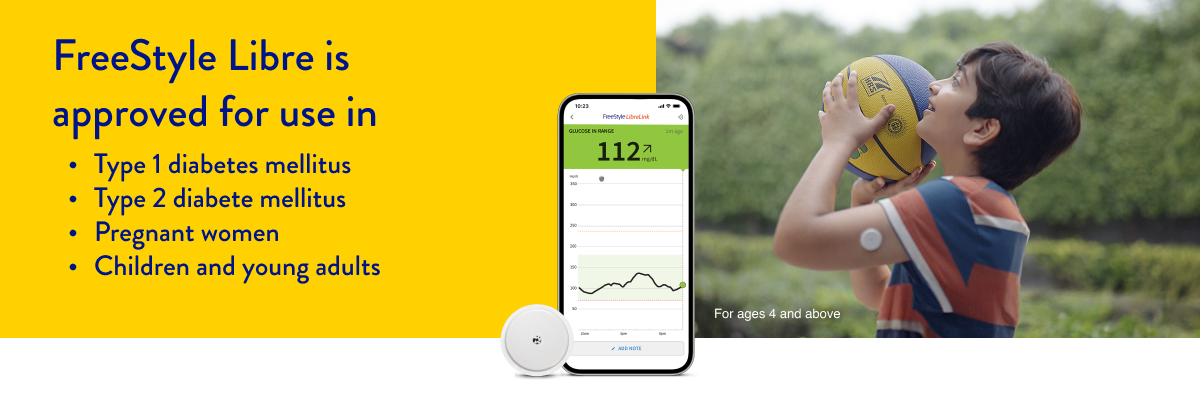
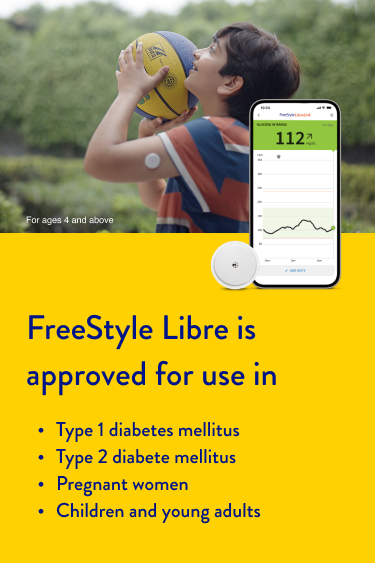
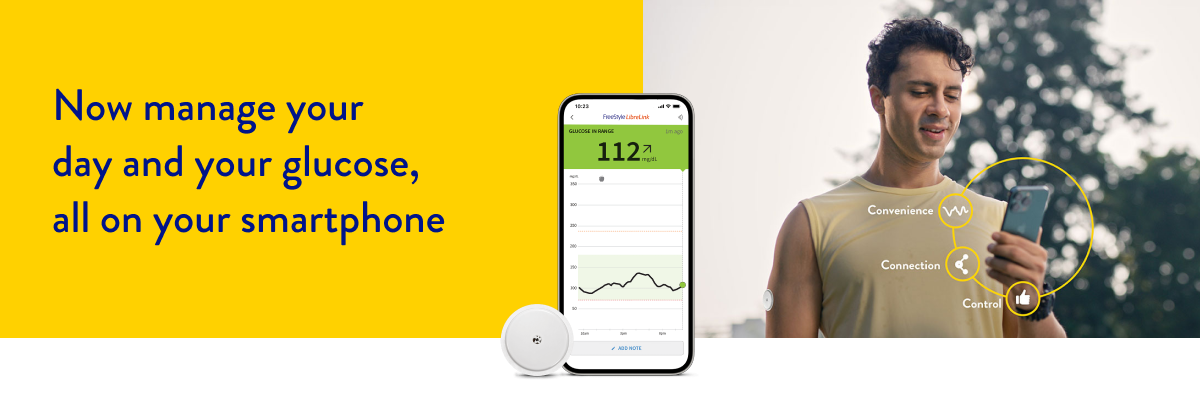
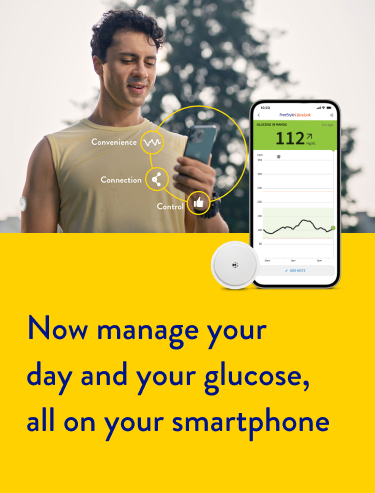








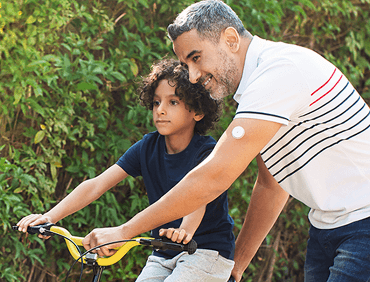
Know your glucose level without finger pricks1

Spend less time in low glucose (<70 mg/dL), both during the day and at night5,6
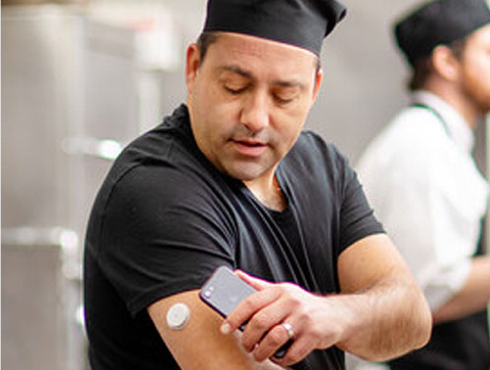
Achieve rapid, significant, and sustained A1c reduction4

Increase Time in Range2

Understand glucose variability

Identify daily patterns
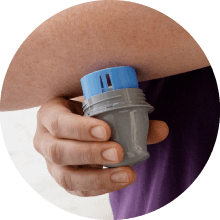
Apply the sensor to the back of your upper arm with the applicator
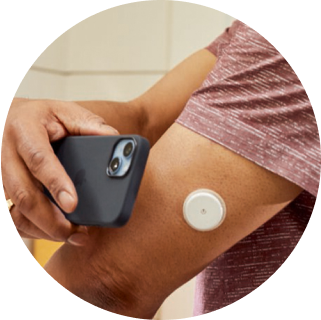
A painless6 one-second scan is all you need to see your glucose readings
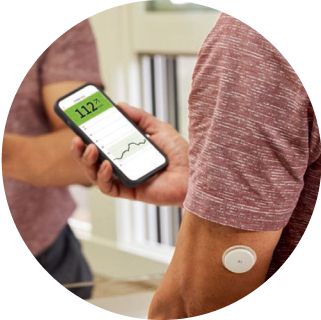
See your current glucose reading, eight hours of data, and a trend arrow that shows you where your glucose is heading
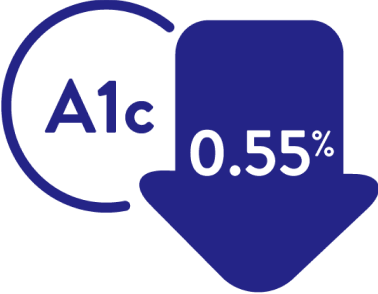
Average reduction in HbA1c
A1c reduction was observed at 2-4 months and sustained at month 12 in adults and children with T1D and adults with T2D4,8
HbA1c reduction in T2D users who use all types of insulin3
HbA1c reduction in T2D users who use basal insulin30
Reduced time spend in hypoglycaemia for T1D users5
Reduced time spend in hypoglycaemia in T2D users6
Currently using FreeStyle Libre or starting your first sensor? Looking to learn more about managing your glucose? Obtain the latest updates and exclusive offers
Join the MyFreeStyle program today!
Statistically significant A1c reduction based on the confidence interval range.
Abbreviations: T1D: type 1 diabetes; T2D: type 2 diabetes.
Links which take you out of Abbott worldwide websites are not under the control of Abbott, and Abbott is not responsible for the contents of any such site or any further links from such site. Abbott is providing these links to you only as a convenience, and the inclusion of any link does not imply endorsement of the linked site by Abbott.
The website that you have requested also may not be optimized for your screen size.
Do you wish to continue and exit this website?
Stay connected